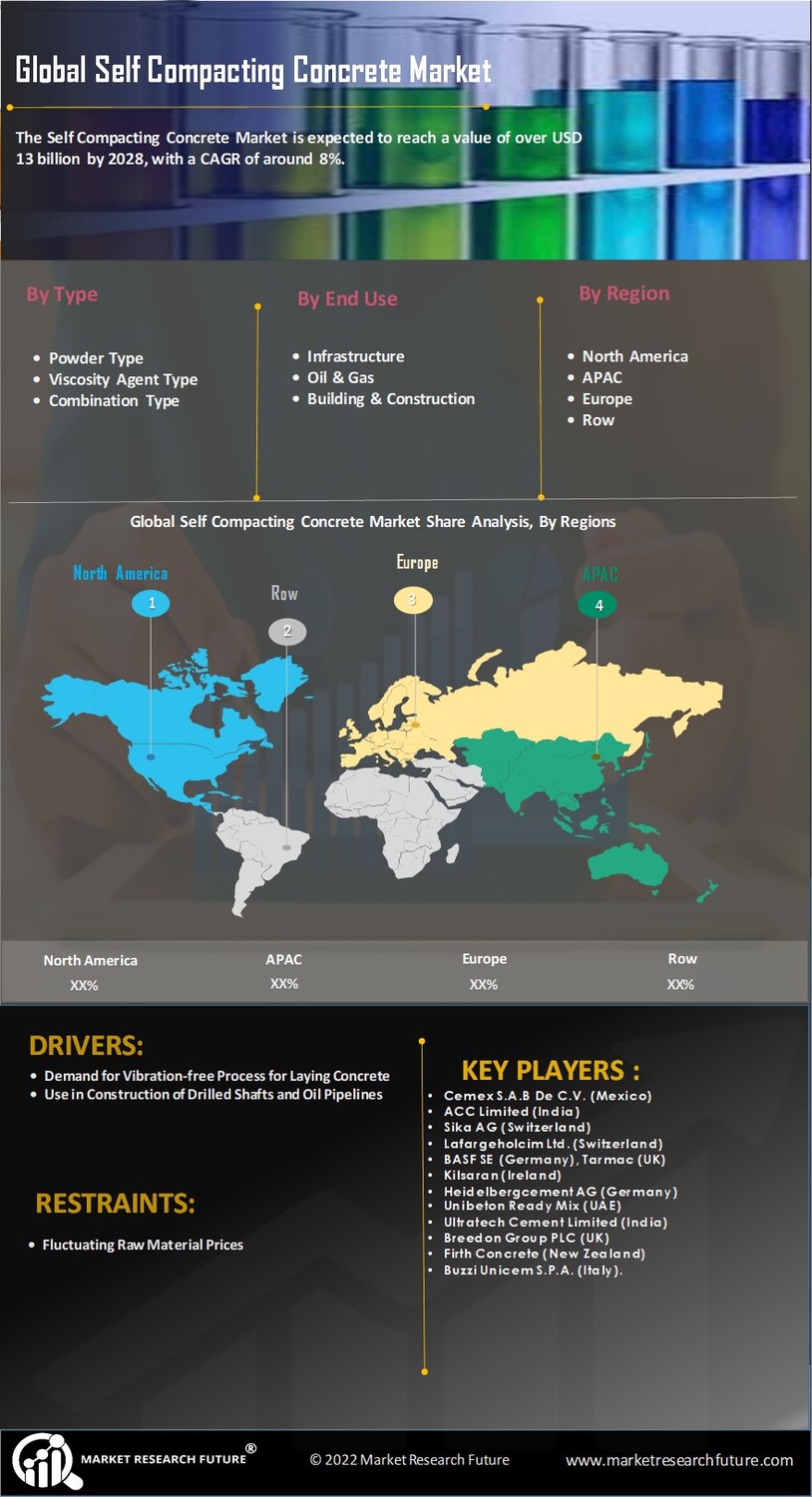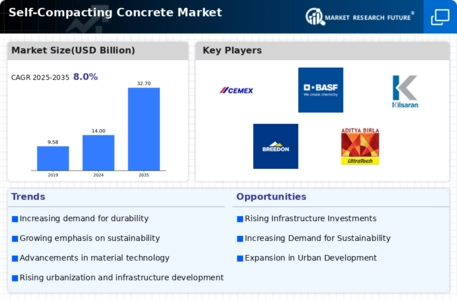Self Compacting Concrete Market Summary
As per Market Research Future analysis, the Self-Compacting Concrete Market Size was estimated at 14.02 USD Billion in 2024. The Self-Compacting Concrete industry is projected to grow from 15.14 USD Billion in 2025 to 32.76 USD Billion by 2035, exhibiting a compound annual growth rate (CAGR) of 8.02% during the forecast period 2025 - 2035
Key Market Trends & Highlights
The Self-Compacting Concrete Market is poised for robust growth driven by sustainability and technological advancements.
- The market is experiencing a notable shift towards sustainability, with increasing emphasis on eco-friendly construction materials.
- Technological innovations in concrete production are enhancing the performance and versatility of self-compacting concrete.
- North America remains the largest market, while the Asia-Pacific region is emerging as the fastest-growing area for self-compacting concrete applications.
- The rising demand for high-performance materials and regulatory support for sustainable construction practices are key drivers propelling market expansion.
Market Size & Forecast
| 2024 Market Size | 14.02 (USD Billion) |
| 2035 Market Size | 32.76 (USD Billion) |
| CAGR (2025 - 2035) | 8.02% |
Major Players
LafargeHolcim (CH), CEMEX (MX), HeidelbergCement (DE), BASF (DE), Sika AG (CH), Firth Industries (NZ), UltraTech Cement (IN), Tarmac (GB), ACC Limited (IN)


















Leave a Comment